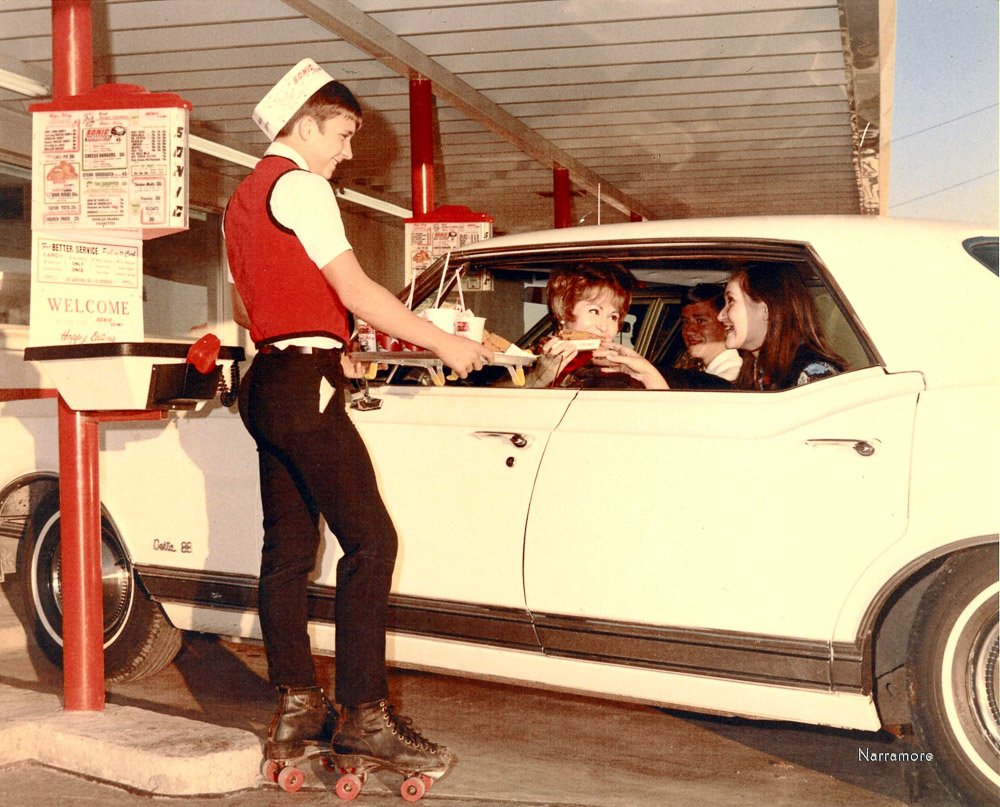"The Founder" movie, or how to spot a breakthrough innovation?
“The Founder” is a 2016 movie on the story of how Ray Kroc (who is considered as the one who made McDonald’s the company it is today), “stole” McDonald’s from its founders - Richard and Maurice McDonald.
Ray Kroc, turning the chain into the most successful fast-food corporation in the world. One out of every 8 American workers has been employed by McDonald’s! (Photo)
The movie, beyond its entertaining and cinematographic qualities, provides significant insights into entrepreneurship, lean manufacturing, frugality, business and breakthrough innovation in its first half.
Two particular scenes are absolutely remarkable :
The frugal approach to design and test the“Speedee system”, the McDonald brothers’ revolutionary kitchen organization which ensures that “the order is ready in 30 seconds, not 30 minutes”.
The illustration of what breakthrough innovation is and what it means to bring it onto the market.
The first scene about frugality takes place on a tennis field where Richard and Maurice McDonald test several configurations using at-scale chalk sketches of the kitchen. This scene has been subject to much thorough analysis available online.
The second scene, on the other hand, is still rather blank of any comments and yet very interesting, as far as identifying breakthrough innovations is concerned. The remainder of this article focuses on that scene ( (cf 00:17:40 - 00:25:00 in the movie).
Act 1 – The initial project, yet another drive-in
The 1950s were the golden age of the drive-in restaurant model in the US. At the time, drive-ins worked along the following lines: customers arrive by car at the restaurant and stop in the parking lot. A waitress in uniform called a "carhop" would come to their window, usually on roller skates, and noted the order of the customer - who chose their favourite food from a very large menu.
The food would then be prepared on demand in the kitchen. The carhop would come back with their order, and the customers would consume their meal in their car.
“Within metropolitan city limits of Miami, there are some 150 drive-ins operating throughout the year" - Source
The drive-in system allowed customers to eat faster than at a traditional restaurant since they didn't need to leave their cars. Moreover, at a time when owning a car and/or private property was particularly fashionable and highly distinctive of one's social status in the US, eating in one's car was in style. Therefore, drive-ins didn't need to include an eating area. Since they only had a kitchen, they were far smaller and thus cheaper than any traditional sit-down restaurant.
In the 1950s, drive-ins were very popular among young people wearing blue jeans and listening to Chuck Berry and Elvis Presley. So, in order to satisfy and retain this customer segment, drive-ins also developed added features for them, such as jukeboxes, cigarette vending machines, etc.
Drive-ins were a huge success at the time. They embodied the dominant design which widely spread across the country and turned out to be a highly profitable opportunity for restaurant owners. That is why the McDonalds, who had just arrived in San Bernardino, decided to get into the drive-in business and built the McDonald's Barbecue, of which they were very proud: “27 items on the menu, uniform, waitresses bringing food directly to the car… It went gangbusters!”. Unfortunately, their success was short-lived.
Act 2 – Reinvent the fast-food
The sales ended up stagnating due to some limitations of the drive-in model itself, according to Richard and Maurice. The three main limitations the brothers identified were the following:
The target customer: youngsters listening to Rock’n Roll were not necessarily the ideal customers. Some didn't pay, others stole or broke dishes, or even flirted with the carhops...
The waiting time: drive-ins were faster than usual restaurants, but since the food was still prepared on demand once it got ordered, the process was still slow.
The cost of running a drive-in: as it lacked an eating area, the building itself was cheaper than a traditional restaurant, but the payroll stayed the same. Moreover, due to the large menu choice, optimal stock management was crucial, and unsold food was thrown away – which resulted in a net loss.
The McDonald brothers thus decided to modify several characteristics of the traditional drive-in model, in order to deal with these limitations. To address limitations 1 and 3, they started by removing all their unnecessary features as follows:
The new menu is now limited to 3 items: Hamburger, French fries and Coca-Cola.
Carhops are removed: customers shall now walk to the front desk to order their food instead of staying in their cars.
Dishes are removed: disposable paper packaging is used instead...
All dispensable features are also discarded. No more jukeboxes or cigarette vending machines.
The next task is to tackle the waiting time limitation (point 2). The McDonald brothers invented the Speedee System, a new way to organize the kitchen, in order to deliver an order in “30 seconds, not 30 minutes”.
At a closer look, the two brothers ended up changing quite many a feature. The resulting restaurant model is indeed very different from the traditional drive-in one:
1. From a value and usage point of view:
Their new value proposition is to get food fast, not to get food without getting off your car
Customers do not get served in their cars anymore, but need to walk to the front desk to place their orders.
The menu is limited to a 3-item choice whereas the former one used to include more than 20
Customers aren't confined to eating in their cars but can consume their food anywhere they like, as easily as a sandwich.
2. From a business point of view:
The McDonald brothers drastically reduced the cost of operating their restaurant.
The market target expanded to families and was no longer only designed for youngsters
3. From a technical point of view:
The kitchen organization was reinvented from scratch in order to achieve speedy food delivery. It isn't some incremental change based on the drive-in model, but rather a brand-new fast-food model.
Thus several deep-rooted elements of the traditional drive-in model have radically changed, especially in terms of value proposition & usage. The McDonald brothers ended up reinventing the “drive-in” model.
These 2 factors (the number and the depth of the changes) are distinctive of breakthrough innovations.
But two more elements help to define this case as a breakthrough innovation. First, the brothers so drastically changed the drive-in model, their new restaurant model cannot be labelled as a drive-in. Indeed, the two models have grown too far apart to fall under the same object category.
In fact, the MacDonald brothers created a new category of restaurants: fast-food restaurants. Breakthrough innovations usually contribute to making new categories of objects, which emerge to the extent that one is no longer comfortable naming the new object by the same name as its closest alternatives on the market.
Another element to spot a breakthrough innovation is when people refer to its creator as a "mad" or "crazy" person. How so? To the public, it might not be very rational to abandon a model that is working well and at the same time, to reconfigure or build a new model that is full of uncertainties. Breakthrough innovations usually face remarks such as “it’s crazy”, “nobody does that”, and “why change a business that works like a charm?”. Interestingly, this kind of reaction can be used as a great indicator to spot breakthrough innovations.
Act 3 – The setback
Richard and Maurice were all set to profit from their innovative restaurant. Except that it was a complete disaster.
The customers arrived at what they thought was a drive-in that turned out not to be one. It was only natural that they should feel disappointed and confused. They would wonder where all the carhops were, why they needed to get off their car, why they couldn't order a taco, etc.
It was a tough moment for the brothers as well as for the underserved clients - because they did not yet have the new "rules of the game" of the fast-food restaurant in mind.
This is another noticeable feature of breakthrough innovations: customers do not expect to be faced at once with a complete change of the model that they have grown accustomed to.
To prevent this from happening, a viable option is to communicate the new concept as soon as possible. The idea behind a proactive communication approach is to educate future clients on what’s in it for them, and give them time to assimilate the new “rules of the game”. This step always takes time and cannot be rushed.
Act 4 – The start of a tremendous success
But the brothers did not let this setback discourage them. They realized the communication towards their new clients - families - had been sorely lacking. Richard and Maurice thus set up an event to re-inaugurate their fast food: the idea was to attract families to the event organized by McDonald's and to communicate on how they would benefit from this new restaurant format and its value proposition.
An ad promoting McDonald's as the perfect place to dine with the family
And that strategy was very successful!
A few days later, more and more families came to the new fast-food restaurant. The brothers were finally on the road to success! Unfortunately for Richard and Maurice, the success didn't turn out to be theirs, but Ray Kroc’s (cf. the second half of the movie).
***
Here is a quick summary :
Several hints are helpful in identifying a breakthrough innovation:
There is a great number of profound changes which differentiate the new model or object from its closest alternative on the market. Breakthrough innovations open new categories of objects, which no longer conform to their closest alternative on the market.
Clients, investors, and people oftentimes consider the breakthrough innovation leader to be a madman, in the sense that he abandons a secure and profitable business to launch an unknown and risky one.
The former clients might react negatively to the new changes, which requires innovators to communicate clearly the benefits and advantages of their innovations.
Disclaimer: the analysis above is only based on “The Founder” movie, which is most likely to be highly romanticized. Still, what is presented in the movie is relevant for us in order to understand the logic and illustrate key points to identify breakthrough innovation.



